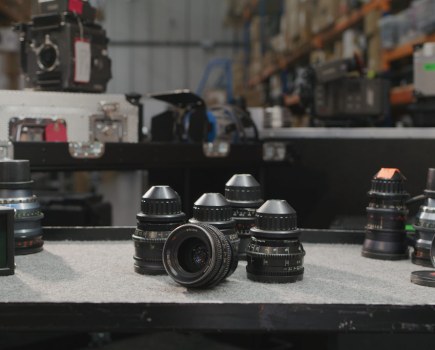Canon has today announced the EOS 60D, an 18-million-pixel DSLR camera pitched between the 550D and 7D, replacing the two-year-old (15.1MP) 50D.
Squarely aimed at photography enthusiasts the 60D uses the same sensor as the 550D and borrows its low pass filter from the higher-end 7D.
Canon UK has confirmed that the 60D will cost £1,099.99, body only, and will go on sale in October.
Billed as more than a simple upgrade, the 60D boasts Full HD movie recording (1920×1080 pixels), plus a 3in vari-angle LCD screen carrying a resolution of 1,040,000 dots.
The movie mode includes full manual control and an external stereo microphone terminal has been included.
Amateur Photographer understands that the 60D is more weather-proof than the 50D, though not on a par with its 7D sibling.
Key differences over the 550D include in-camera raw image processing, allowing photographers to edit settings such as brightness, contrast, white balance or chromatic aberration and to save the file as a JPEG.
A built-in Speedlite flash transmitter allows control of Groups A and B Speedlite flash, according to Canon.
Armoury also includes Basic +, a new function that allows photographers, via the menu, to add their own creative touch to images, such as Daylight, Cloudy or Sunset effects.
Meanwhile, Pre-set Picture styles include Vivid, Soft, Warm or Monochrome.
Users can also select the image aspect ratio they want (from a choice of 3:2, 4:3, 16:9 and 1:1).
Post-capture creative filter options include Grainy B&W, Soft Focus and Toy Camera – an effect that alters the colour bias of an image.
To aid handling the 60D sports a redesigned body, combining an ?ergonomically enhanced, curved shape with a new button layout?, says Canon. This is designed to help photographers change settings more easily.
Canon has added a Quick Control button for instant access to the most common settings and playback controls.
And a horizontal electronic level can be displayed on the Live View screen, or in the camera?s viewfinder, to help when composing landscape photographs.
Equivalent ISO sensitivity ranges from 100-6400 (expandable to 12,800) and a shooting speed of 5.3 frames per second is possible (slightly lower than the 6.4fps on board the 50D, however).
The 60D also inherits the iFCL metering system of the 7D and uses a 63-zone Dual Layer sensor.
A movie crop option is available, allowing recording of the central 640×480 pixel area of the sensor to create an effective magnification of around seven times.
The 60D will also be out in various kits, ranging from an 18-55mm lens outfit costing £1,199.99, up to a 17-85mm kit, costing £1,449.99.









